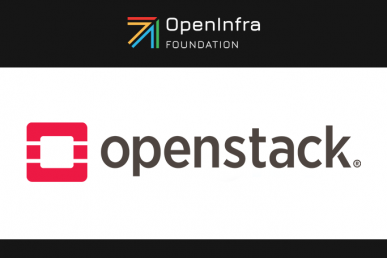Kubernetes is self-healing container orchestration platform that can detect failures from pods and redeploy those workloads, but magnum-auto-healer is a self-healing cluster management service that will automatically recover a failed master or worker node within your Magnum cluster.
Basically, magnum-auto-healer ensures that the Kubernetes nodes you’re running are healthy by monitoring their status periodically, searching for unhealthy instances and triggering replacements when needed, maximizing the cluster’s high availability and reliability as well as protecting applications from downtime when the node it’s running on fails.
Another common concern for Kubernetes clusters is scalability. Kubernetes cluster-autoscaler can scale the worker pools in your cluster automatically to increase or decrease the number of worker nodes based on the sizing needs of the scheduled workloads. cluster-autoscaler periodically scans the cluster to adjust the number of worker nodes in response to your workload resource requests and any custom settings that you configure, such as scanning intervals. The main purpose of cluster-autoscaler is autoscaling, not autohealing. There’s also a Magnum driver for cluster-autoscaler, cluster-autoscaler that can be deployed together with magnum-auto-healer.
Like cluster-autoscaler, magnum-auto-healer is supposed to run together with cloud providers as well; OpenStack Magnum is supported as the reference implementation.
What the magnum-auto-healer can do for you
In the current Kubernetes design, one major downside for developers is that Kubernetes can’t auto-manage its own machines. As a consequence, operations must get involved every time a worker node fails, such as when the kubelet service hangs, a random hardware failure, etc. So the company where I work, Catalyst Cloud, developed the magnum-auto-healer to enable a node auto-repair process. It’s similar to the auto-repairing feature in GKE (Google Kubernetes Engine) but the magnum-auto-healer is fully open source and offers a pluggable mechanism that supports various cloud providers.
In addition to on-premise solutions like GKE node auto-repair, there are a few similar open-source projects such as OpenShift’s machine healthcheck controller. However, most of these existing solutions integrate with Kubernetes so tightly by defining CRD resources and managing the node resources on their own. On the contrary, the magnum-auto-healer is assumed to be running in the cloud environment, which means the Kubernetes cluster (and all its nodes) is created and managed by the cloud service API, the source of truth of the cluster information comes from the cloud rather than the Kubernetes cluster. As a result, magnum-auto-healer is designed as a lightweight service that can coordinate with the cloud environment for the auto-healing.
Behind the design
A few considerations that were top of mind when we designed the service:
- A single component for the cluster auto-healing purpose. There were already some other components to deal with some specific tasks separately, combining them together with some customization may work, but this leads to more complexity and maintenance overhead.
- Support both master nodes and worker nodes.
- Allow the cluster administrator to disable the autohealing feature on the fly, which is very important for cluster operations like upgrade or scheduled maintenance.
- Give the option for the Kubernetes cluster to not be exposed to either the public or the OpenStack control plane. For example, in Magnum, the end user may create a private cluster that’s not accessible even from Magnum control services.
- The health check should be pluggable. Deployers should be able to write their own health check plugin with customized health check parameters.
- Support different cloud providers.
How to deploy and test magnum-auto-healer
Prerequisites
- A multi-node cluster (three masters and three workers) is created in OpenStack Magnum.
$ openstack coe cluster list +--------------------------------------+-----------------------------+-----------------+------------+--------------+-----------------+ | uuid | name | keypair | node_count | master_count | status | +--------------------------------------+-----------------------------+-----------------+------------+--------------+-----------------+ | c418c335-0e52-42fc-bd68-baa8d264e072 | lingxian_por_test_1.12.7_ha | lingxian_laptop | 3 | 3 | CREATE_COMPLETE | +--------------------------------------+-----------------------------+-----------------+------------+--------------+-----------------+ $ openstack server list --name lingxian-por-test-1-12-7-ha +--------------------------------------+---------------------------------------------------+--------+-----------------------------------------+-------------------------+---------+ | ID | Name | Status | Networks | Image | Flavor | +--------------------------------------+---------------------------------------------------+--------+-----------------------------------------+-------------------------+---------+ | 908957c2-ac88-4b54-a1fc-91f9cc8f98f1 | lingxian-por-test-1-12-7-ha-bbgjts5g4xhb-minion-2 | ACTIVE | lingxian_net=10.0.10.33, 150.242.42.234 | fedora-atomic-27-x86_64 | c1.c4r8 | | 8f0c3ad9-caf5-45b6-bf3a-97b3bb6de623 | lingxian-por-test-1-12-7-ha-bbgjts5g4xhb-minion-0 | ACTIVE | lingxian_net=10.0.10.32, 150.242.42.233 | fedora-atomic-27-x86_64 | c1.c4r8 | | a6ae4cee-7cf2-4b25-89bc-a5c6cb2c364d | lingxian-por-test-1-12-7-ha-bbgjts5g4xhb-minion-1 | ACTIVE | lingxian_net=10.0.10.34, 150.242.42.245 | fedora-atomic-27-x86_64 | c1.c4r8 | | 2af96203-cc6f-4b55-8fb2-062340207ebb | lingxian-por-test-1-12-7-ha-bbgjts5g4xhb-master-2 | ACTIVE | lingxian_net=10.0.10.31, 150.242.42.226 | fedora-atomic-27-x86_64 | c1.c2r4 | | 10bef366-b5a8-4400-b2c3-82188ec06b13 | lingxian-por-test-1-12-7-ha-bbgjts5g4xhb-master-1 | ACTIVE | lingxian_net=10.0.10.30, 150.242.42.22 | fedora-atomic-27-x86_64 | c1.c2r4 | | 9c17f034-6825-4e49-b3cb-0ecddd1a8dd8 | lingxian-por-test-1-12-7-ha-bbgjts5g4xhb-master-0 | ACTIVE | lingxian_net=10.0.10.29, 150.242.42.213 | fedora-atomic-27-x86_64 | c1.c2r4 | +--------------------------------------+---------------------------------------------------+--------+-----------------------------------------+-------------------------+---------+ - The kubeconfig file of the cluster is in place.
Deploy magnum-auto-healer
We recommend running magnum-auto-healer service as a DaemonSet on the master nodes, the service is running in active-passive mode using leader election mechanism. There is a sample manifest file here, you need to change some variables as needed before actually running kubectl apply command.
The following commands are just examples:
magnum_cluster_uuid=c418c335-0e52-42fc-bd68-baa8d264e072
keystone_auth_url=https://api.nz-por-1.catalystcloud.io:5000/v3
user_id=ceb61464a3d341ebabdf97d1d4b97099
user_project_id=b23a5e41d1af4c20974bf58b4dff8e5a
password=password
region=RegionOne
image=lingxiankong/magnum-auto-healer:0.1.0
cat <<EOF | kubectl apply -f -
---
kind: ServiceAccount
apiVersion: v1
metadata:
name: magnum-auto-healer
namespace: kube-system
---
kind: ClusterRoleBinding
apiVersion: rbac.authorization.k8s.io/v1
metadata:
name: magnum-auto-healer
roleRef:
apiGroup: rbac.authorization.k8s.io
kind: ClusterRole
name: cluster-admin
subjects:
- kind: ServiceAccount
name: magnum-auto-healer
namespace: kube-system
---
kind: ConfigMap
apiVersion: v1
metadata:
name: magnum-auto-healer-config
namespace: kube-system
data:
config.yaml: |
cluster-name: ${magnum_cluster_uuid}
dry-run: false
monitor-interval: 15s
check-delay-after-add: 20m
leader-elect: true
healthcheck:
master:
- type: Endpoint
params:
unhealthyDuration: 30s
protocol: HTTPS
port: 6443
endpoints: ["/healthz"]
okCodes: [200]
- type: NodeCondition
params:
unhealthyDuration: 1m
types: ["Ready"]
okValues: ["True"]
worker:
- type: NodeCondition
params:
unhealthyDuration: 1m
types: ["Ready"]
okValues: ["True"]
openstack:
auth-url: ${keystone_auth_url}
user-id: ${user_id}
project-id: ${user_project_id}
password: ${password}
region: ${region}
---
apiVersion: apps/v1
kind: DaemonSet
metadata:
name: magnum-auto-healer
namespace: kube-system
labels:
k8s-app: magnum-auto-healer
spec:
selector:
matchLabels:
k8s-app: magnum-auto-healer
template:
metadata:
labels:
k8s-app: magnum-auto-healer
spec:
serviceAccountName: magnum-auto-healer
tolerations:
- effect: NoSchedule
operator: Exists
- key: CriticalAddonsOnly
operator: Exists
- effect: NoExecute
operator: Exists
nodeSelector:
node-role.kubernetes.io/master: ""
containers:
- name: magnum-auto-healer
image: ${image}
imagePullPolicy: Always
args:
- /bin/magnum-auto-healer
- --config=/etc/magnum-auto-healer/config.yaml
- --v
- "2"
volumeMounts:
- name: config
mountPath: /etc/magnum-auto-healer
volumes:
- name: config
configMap:
name: magnum-auto-healer-config
EOF
Testing magnum-auto-healer
You can ssh into a worker node (lingxian-por-test-1-12-7-ha-bbgjts5g4xhb-minion-1 in this example) and stop the kubelet service to simulate the worker node failure. The node status check is implemented in NodeCondition health check plugin (see configuration above).
$ ssh [email protected]
[fedora@lingxian-por-test-1-12-7-ha-bbgjts5g4xhb-minion-1 ~]$ sudo systemctl stop kubelet
Now wait for the magnum-auto-healer to detect the node failure and trigger the repair process. Notice that the unhealthy node is shut down:
+--------------------------------------+---------------------------------------------------+---------+-----------------------------------------+-------------------------+---------+
| ID | Name | Status | Networks | Image | Flavor |
+--------------------------------------+---------------------------------------------------+---------+-----------------------------------------+-------------------------+---------+
| 908957c2-ac88-4b54-a1fc-91f9cc8f98f1 | lingxian-por-test-1-12-7-ha-bbgjts5g4xhb-minion-2 | ACTIVE | lingxian_net=10.0.10.33, 150.242.42.234 | fedora-atomic-27-x86_64 | c1.c4r8 |
| a6ae4cee-7cf2-4b25-89bc-a5c6cb2c364d | lingxian-por-test-1-12-7-ha-bbgjts5g4xhb-minion-1 | SHUTOFF | lingxian_net=10.0.10.34, 150.242.42.245 | fedora-atomic-27-x86_64 | c1.c4r8 |
| 8f0c3ad9-caf5-45b6-bf3a-97b3bb6de623 | lingxian-por-test-1-12-7-ha-bbgjts5g4xhb-minion-0 | ACTIVE | lingxian_net=10.0.10.32, 150.242.42.233 | fedora-atomic-27-x86_64 | c1.c4r8 |
| 2af96203-cc6f-4b55-8fb2-062340207ebb | lingxian-por-test-1-12-7-ha-bbgjts5g4xhb-master-2 | ACTIVE | lingxian_net=10.0.10.31, 150.242.42.226 | fedora-atomic-27-x86_64 | c1.c2r4 |
| 10bef366-b5a8-4400-b2c3-82188ec06b13 | lingxian-por-test-1-12-7-ha-bbgjts5g4xhb-master-1 | ACTIVE | lingxian_net=10.0.10.30, 150.242.42.22 | fedora-atomic-27-x86_64 | c1.c2r4 |
| 9c17f034-6825-4e49-b3cb-0ecddd1a8dd8 | lingxian-por-test-1-12-7-ha-bbgjts5g4xhb-master-0 | ACTIVE | lingxian_net=10.0.10.29, 150.242.42.213 | fedora-atomic-27-x86_64 | c1.c2r4 |
+--------------------------------------+---------------------------------------------------+---------+-----------------------------------------+-------------------------+---------+
Then a new node comes up:
+--------------------------------------+---------------------------------------------------+---------+-----------------------------------------+-------------------------+---------+
| ID | Name | Status | Networks | Image | Flavor |
+--------------------------------------+---------------------------------------------------+---------+-----------------------------------------+-------------------------+---------+
| 31d5e246-6f40-4e14-88a9-8cd86a19c75a | lingxian-por-test-1-12-7-ha-bbgjts5g4xhb-minion-1 | BUILD | | fedora-atomic-27-x86_64 | c1.c4r8 |
| 908957c2-ac88-4b54-a1fc-91f9cc8f98f1 | lingxian-por-test-1-12-7-ha-bbgjts5g4xhb-minion-2 | ACTIVE | lingxian_net=10.0.10.33, 150.242.42.234 | fedora-atomic-27-x86_64 | c1.c4r8 |
| a6ae4cee-7cf2-4b25-89bc-a5c6cb2c364d | lingxian-por-test-1-12-7-ha-bbgjts5g4xhb-minion-1 | SHUTOFF | | fedora-atomic-27-x86_64 | c1.c4r8 |
| 8f0c3ad9-caf5-45b6-bf3a-97b3bb6de623 | lingxian-por-test-1-12-7-ha-bbgjts5g4xhb-minion-0 | ACTIVE | lingxian_net=10.0.10.32, 150.242.42.233 | fedora-atomic-27-x86_64 | c1.c4r8 |
| 2af96203-cc6f-4b55-8fb2-062340207ebb | lingxian-por-test-1-12-7-ha-bbgjts5g4xhb-master-2 | ACTIVE | lingxian_net=10.0.10.31, 150.242.42.226 | fedora-atomic-27-x86_64 | c1.c2r4 |
| 10bef366-b5a8-4400-b2c3-82188ec06b13 | lingxian-por-test-1-12-7-ha-bbgjts5g4xhb-master-1 | ACTIVE | lingxian_net=10.0.10.30, 150.242.42.22 | fedora-atomic-27-x86_64 | c1.c2r4 |
| 9c17f034-6825-4e49-b3cb-0ecddd1a8dd8 | lingxian-por-test-1-12-7-ha-bbgjts5g4xhb-master-0 | ACTIVE | lingxian_net=10.0.10.29, 150.242.42.213 | fedora-atomic-27-x86_64 | c1.c2r4 |
+--------------------------------------+---------------------------------------------------+---------+-----------------------------------------+-------------------------+---------+
Finally, all the nodes are healthy again after the repair processs. In Magnum, the new node has the same IP address and hostname with the previous one:
+--------------------------------------+---------------------------------------------------+--------+-----------------------------------------+-------------------------+---------+
| ID | Name | Status | Networks | Image | Flavor |
+--------------------------------------+---------------------------------------------------+--------+-----------------------------------------+-------------------------+---------+
| 31d5e246-6f40-4e14-88a9-8cd86a19c75a | lingxian-por-test-1-12-7-ha-bbgjts5g4xhb-minion-1 | ACTIVE | lingxian_net=10.0.10.34, 150.242.42.245 | fedora-atomic-27-x86_64 | c1.c4r8 |
| 908957c2-ac88-4b54-a1fc-91f9cc8f98f1 | lingxian-por-test-1-12-7-ha-bbgjts5g4xhb-minion-2 | ACTIVE | lingxian_net=10.0.10.33, 150.242.42.234 | fedora-atomic-27-x86_64 | c1.c4r8 |
| 8f0c3ad9-caf5-45b6-bf3a-97b3bb6de623 | lingxian-por-test-1-12-7-ha-bbgjts5g4xhb-minion-0 | ACTIVE | lingxian_net=10.0.10.32, 150.242.42.233 | fedora-atomic-27-x86_64 | c1.c4r8 |
| 2af96203-cc6f-4b55-8fb2-062340207ebb | lingxian-por-test-1-12-7-ha-bbgjts5g4xhb-master-2 | ACTIVE | lingxian_net=10.0.10.31, 150.242.42.226 | fedora-atomic-27-x86_64 | c1.c2r4 |
| 10bef366-b5a8-4400-b2c3-82188ec06b13 | lingxian-por-test-1-12-7-ha-bbgjts5g4xhb-master-1 | ACTIVE | lingxian_net=10.0.10.30, 150.242.42.22 | fedora-atomic-27-x86_64 | c1.c2r4 |
| 9c17f034-6825-4e49-b3cb-0ecddd1a8dd8 | lingxian-por-test-1-12-7-ha-bbgjts5g4xhb-master-0 | ACTIVE | lingxian_net=10.0.10.29, 150.242.42.213 | fedora-atomic-27-x86_64 | c1.c2r4 |
+--------------------------------------+---------------------------------------------------+--------+-----------------------------------------+-------------------------+---------+
The whole process is available in a video demo.
Get involved
Currently, the magnum-auto-healer is still in the prototype phase, meaning many breaking changes can get accepted over time. Catalyst Cloud will deploy the service in production but as an alpha feature. Any feedback or contributions are welcome.
- Contact me @lxkong) in #sig-openstack channel on Kubernetes Slack
- SIG OpenStack Mailing List
- Code base
About the author
Lingxian Kong is a senior developer at Catalyst Cloud and frequent Superuser contributor. Follow him on Weibo or check out his LinkedIn profile. This post first appeared on GitHub.
Superuser is always interested in open infrastructure community content, get in touch: editorATopenstack.org
Photo // CC BY NC

)










